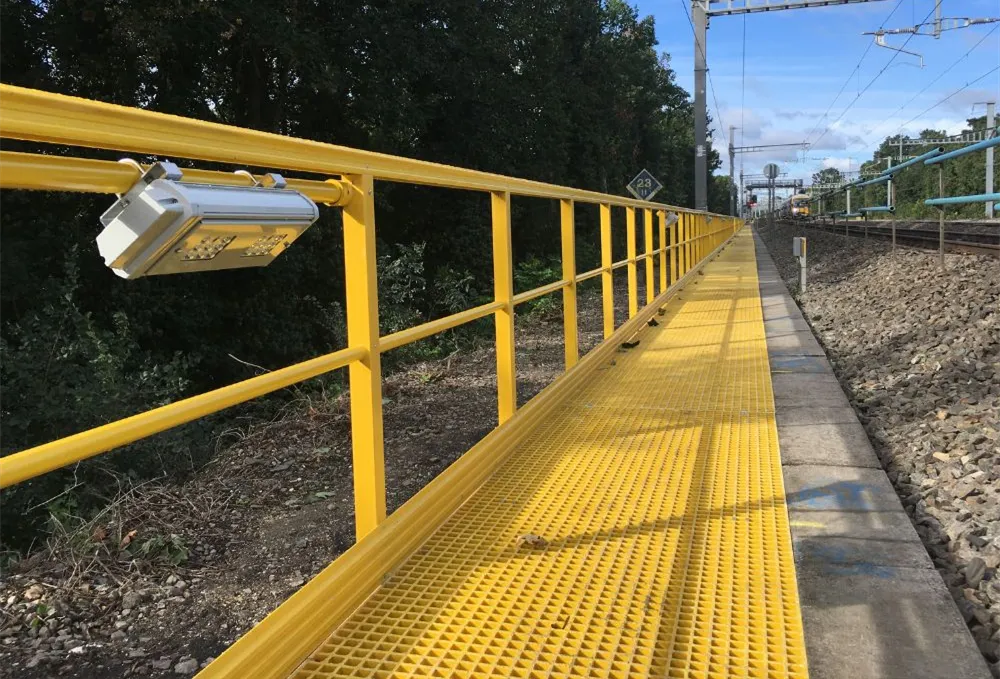loading...
- No. 9, Xingyuan South Street, Dongwaihuan Road, Zaoqiang County, Hengshui, Hebei, China
- admin@zjcomposites.com
- +86 15097380338
- Welcome to visit our website!
Innovative Applications of Glass Fiber Reinforced Polymer Rebar in Modern Construction Techniques
Glass Fiber Reinforced Polymer Rebar A Revolution in Construction Materials
In recent years, the construction industry has witnessed a significant shift towards advanced materials that enhance durability, sustainability, and structural integrity. One such innovation is Glass Fiber Reinforced Polymer (GFRP) rebar, a material that is rapidly gaining popularity as an alternative to traditional steel reinforcement bars. This article explores the properties, benefits, and applications of GFRP rebar, highlighting its transformative potential in modern construction practices.
Understanding GFRP Rebar
GFRP rebar is made from a composite material consisting of a polymer matrix reinforced with glass fibers. The production process involves the layering of glass fibers with a resin, which is then cured to create a solid, lightweight rod. The resulting rebar is characterized by its high tensile strength, low density, and excellent corrosion resistance. Unlike steel, GFRP does not rust, making it an ideal choice for structures exposed to harsh environmental conditions, such as marine environments, chemical plants, and bridges.
Advantages of GFRP Rebar
1. Corrosion Resistance One of the most significant advantages of GFRP rebar is its resistance to corrosion. Steel rebar tends to corrode over time, particularly in environments where salt and moisture are prevalent. This corrosion weakens the structural integrity and requires costly maintenance and repairs. GFRP rebar, on the other hand, maintains its strength and durability, significantly extending the lifespan of the structures in which it is embedded.
2. Lightweight GFRP rebar is approximately one-quarter the weight of steel rebar, making it easier to handle and transport. This lightweight nature can lead to reduced shipping costs and lower labor expenses during installation. Additionally, the ease of handling allows for more efficient construction processes, potentially accelerating project timelines.
3. High Strength-to-Weight Ratio Despite its lightness, GFRP rebar boasts a high tensile strength, comparable to that of steel. This strength-to-weight ratio allows engineers to design structures that require less material without compromising safety or durability. As a result, GFRP rebar can be utilized in applications ranging from residential buildings to infrastructure projects.
glass fiber reinforced polymer rebar

4. Non-Magnetic and Non-Electric Conductivity GFRP rebar does not conduct electricity or heat, making it an ideal choice for applications where electromagnetic interference must be minimized, such as in hospitals and data centers. Additionally, its non-magnetic properties make it suitable for use in sensitive environments, reducing the risk of interference with electronic systems.
5. Sustainability The production and use of GFRP rebar contribute to sustainable construction practices. Its long lifespan reduces the need for repairs or replacements, lessening the overall environmental impact. Furthermore, GFRP can be produced with recyclable materials, aligning with the growing trend towards eco-friendly building practices.
Applications of GFRP Rebar
The versatility of GFRP rebar lends itself to a wide range of applications. It is increasingly used in the construction of bridges, parking garages, tunnels, and waterfront structures. In addition, GFRP is beneficial in the rehabilitation of existing structures where steel corrosion is a concern. Its application in precast concrete elements is also gaining traction, particularly in projects aimed at reducing weight and increasing durability.
Challenges and Considerations
While GFRP rebar presents numerous advantages, it is essential to consider some challenges. Its initial cost can be higher than that of steel rebar, which may deter some project managers from its adoption. Moreover, the bonding between GFRP and concrete is different from that of steel, necessitating careful attention during design and installation. Engineers must be well-versed in the unique properties of GFRP to effectively incorporate it into their designs.
Conclusion
Glass Fiber Reinforced Polymer rebar is poised to revolutionize the construction industry with its unique properties and numerous advantages. As the demand for durable, sustainable construction materials continues to grow, GFRP rebar offers a promising solution that meets these needs while addressing the challenges posed by traditional materials. As awareness and understanding of GFRP technology expand, it is likely that its use will become increasingly commonplace, shaping the future of structural engineering and construction.
-
Transform Your Spaces with FRP Grating SolutionsNewsNov.04,2024
-
The Versatility and Strength of FRP RodsNewsNov.04,2024
-
The Excellence of Fiberglass Water TanksNewsNov.04,2024
-
The Benefits of FRP Grating for Your ProjectsNewsNov.04,2024
-
Elevate Your Efficiency with FRP Pressure VesselsNewsNov.04,2024
-
Welcome to the World of FRP Pressure VesselsNewsOct.12,2024
-
Unveiling the Future of Filtration: Why FRP Filter Vessels are a Game ChangerNewsOct.12,2024
